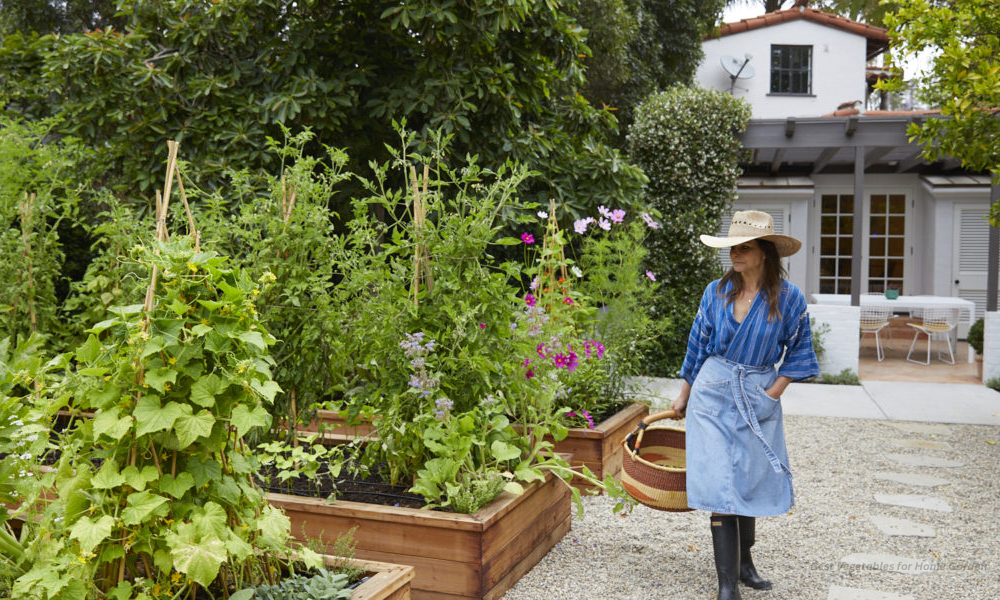Best Vegetables for Home Garden: Grow Fresh, Eat Fresh

Home gardening is becoming increasingly popular, and for good reason. It saves money, ensures access to fresh produce, and offers a fulfilling hobby. If you’re wondering which are the best vegetables for home garden, this guide covers everything you need. From easy-to-grow crops to tips for small spaces and high-yielding choices, we’ll help you build a thriving vegetable garden no matter your experience level.
Table of Contents
Why Choose Home Gardening?
Home gardening offers benefits beyond just saving money. It improves food security, allows control over pesticide use, and helps reduce carbon footprints. Plus, the joy of harvesting your own vegetables is unmatched. Whether you have a large backyard or a small balcony, there’s always room to grow something edible.
How to Choose the Best Vegetables for Home Garden
Choosing the right vegetables involves several factors like climate, soil quality, space availability, and your personal preferences. Beginners should start with low-maintenance and high-yield crops to gain confidence and experience.
Top 10 Best Vegetables for Home Garden
Here’s a list of the best vegetables for home garden success, chosen for their ease of growth, adaptability, and productivity.
1. Tomatoes
Tomatoes are a staple in home gardens due to their versatility and rewarding yield. They thrive in containers or garden beds and need 6–8 hours of sunlight daily. There are many varieties to choose from—cherry, heirloom, beefsteak—each suited for different spaces and tastes.
2. Carrots
Carrots are root vegetables that require loose, well-drained soil for proper growth. They’re perfect for raised beds or deep containers. Carrots grow well in cooler seasons and can be harvested in about 70–80 days, depending on the variety.
3. Spinach
Spinach is an excellent leafy green for home gardens. It grows quickly, tolerates partial shade, and offers multiple harvests. Spinach is also rich in iron and vitamins, making it a great addition to any healthy diet.
4. Bell Peppers
Bell peppers grow best in warm weather and need full sunlight. They are available in various colors—red, green, yellow—and add color and crunch to meals. Start them indoors and transplant outside once temperatures are consistently warm.
5. Lettuce
Lettuce is one of the easiest vegetables to grow and can be harvested multiple times. Ideal for container gardening, lettuce grows fast and requires minimal maintenance. Leaf varieties are better for quick harvests and regrowth.
6. Radishes
Radishes are quick-growing root vegetables that can be harvested within 3–4 weeks. They are ideal for beginner gardeners and do well in cooler weather. They require minimal space and can be grown between other crops as well.
7. Green Beans
Green beans are perfect for vertical gardening as they climb easily with support. They grow fast, produce heavily, and are disease-resistant. You can choose between bush beans (compact) and pole beans (vining) based on space.
8. Zucchini
Zucchini is a prolific summer squash that grows quickly and produces abundantly. It requires ample sunlight and space but rewards the gardener with generous harvests. Just one plant can provide more than enough for a family.
9. Beets
Beets offer dual benefits—the root and the leafy greens are both edible. They are rich in nutrients and relatively easy to grow. Beets prefer cool weather and grow best in well-tilled, fertile soil.
10. Cucumbers
Cucumbers grow fast and need a lot of sunlight and water. They do well with trellising, making them suitable for smaller spaces. Choose bush varieties for containers or vertical vines for garden beds.
Best Vegetables for Small Spaces
If you don’t have much room, don’t worry. Some vegetables are perfectly suited for containers, windowsills, or vertical gardens.
Ideal Choices for Limited Space
Spinach, lettuce, radishes, bush beans, and cherry tomatoes are excellent for small gardens. These crops don’t need deep soil and can be grown in containers, vertical planters, or hanging baskets. You can even use recycled materials like old buckets or crates to build your own mini garden.
High-Yield Vegetables for Maximum Return
Maximize your harvest with vegetables that produce more per plant or allow for repeat harvests.
Best Options for Bigger Harvests
Zucchini, green beans, cherry tomatoes, and lettuce offer the best yields. These vegetables keep producing throughout the growing season, especially when picked regularly. Proper care, such as consistent watering and pruning, enhances productivity further.
Low-Maintenance Vegetables for Beginners
New to gardening? Start with easy, forgiving vegetables that don’t demand too much care.
Top Beginner-Friendly Vegetables
Radishes, lettuce, spinach, and bush beans are great starter crops. They grow quickly, don’t require fertilization every week, and can withstand minor neglect. These vegetables also help build confidence for future gardening endeavors.
Best Practices for a Thriving Vegetable Garden
Growing vegetables successfully at home requires some basic but important practices.
Tips for Healthy Growth
Use well-drained soil rich in organic matter, water consistently, and rotate crops each season. Start composting kitchen scraps to enrich soil naturally. Also, observe your plants daily to catch pests or diseases early. Sunlight and spacing are crucial—don’t overcrowd plants or they’ll compete for nutrients and light.
Seasonal Planting Guide
Planting vegetables at the right time of year ensures better results and reduces the risk of crop failure.
When to Plant What
Cool-season vegetables like spinach, carrots, and lettuce should be planted in early spring or fall. Warm-season vegetables such as tomatoes, cucumbers, and peppers do best in late spring or summer. Always check your region’s USDA zone or local climate conditions before planting.
Conclusion
Choosing the best vegetables for home garden means considering your space, climate, and experience level. Whether you’re starting small or going big, vegetables like tomatoes, lettuce, spinach, and radishes make excellent choices for beginners and seasoned gardeners alike. With the right planning, you can enjoy fresh, organic produce right from your backyard or balcony.






